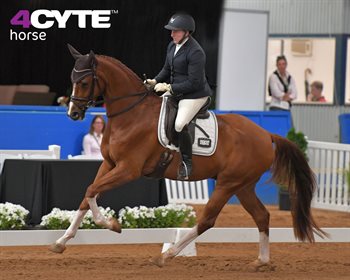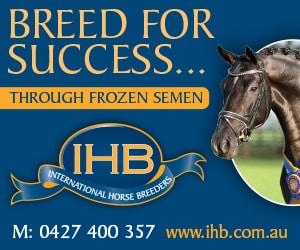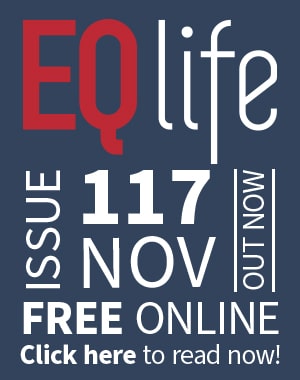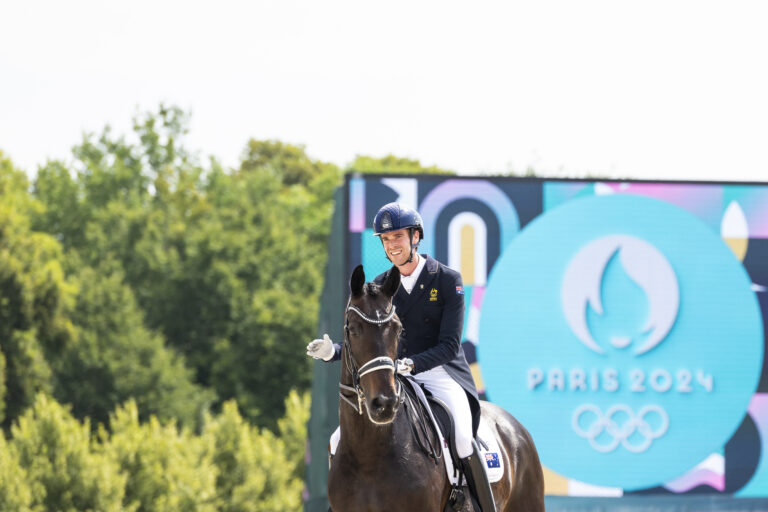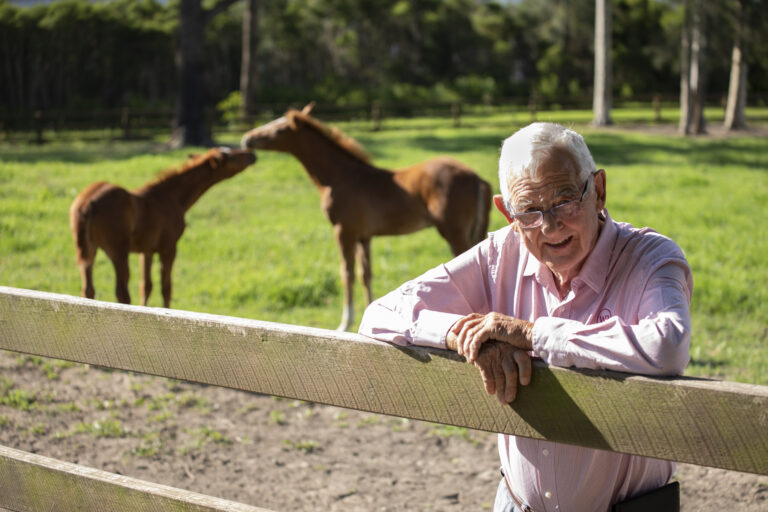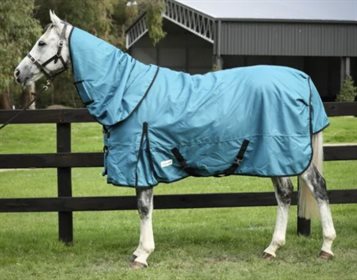Interpath 4CYTETM sponsored rider Sara Price.
The Federation Equestre Internationale (FEI) Dressage Rules state that “the object of Dressage is the development of the horse into a happy athlete through harmonious education. As a result, it makes the horse calm, supple, loose and flexible, but also confident, attentive and keen, thus achieving perfect understanding with the [rider].”
Achieving such an objective relies heavily on your horse’s soundness.
The sport of Dressage is divided into various levels by each country’s relevant National Federation with the lower levels focusing on submission, balance and freedom of movement and the rhythm of the paces.
As the horse progresses through the levels, increasing demands are made with regard to the degree of collection and suspension required. Lateral movements are also introduced and become more demanding in terms of both the steepness and the degree of suppleness and cadence required.
Concurrently, a greater degree of balance, propulsion and energy is expected of the hindlimbs in order to produce the medium and extended paces which are facilitated by the ability of all joints to move freely to allow for optimum expression.
Many years of training eventually lead to the FEI classes and culminate in the Grand Prix which calls for the ultimate in collection and power from the hind end to execute the piaffe, passage, canter pirouettes and maximum extensions whilst maintaining, as per the FEI rule book:
- The freedom and regularity of the paces
- The harmony, lightness and ease of the movements
- The lightness of the forehand and the engagement of the hindquarters, originating from a lively impulsion
- The acceptance of the bit, with submissiveness/throughness without any tension or resistance
Lateral movements and extended paces make unique demands on the horse’s proprioceptive acuity and place stress on the full range of motion of joints and soft tissues of the limbs. Additionally, great demands are made on the weight bearing ability of the hind end as the horse works towards maximum collection.
With most dressage horses being broken in at 3 years of age and then competing well into their teens, musculoskeletal and joint health is crucial to athletic longevity and competition success in the face of such demands.
Gymnastic training predominantly involves repetitive movements as the horse and rider master the various requirements of each level. Consequently, dressage horses are vulnerable to cumulative strain and wear and tear type sub clinical joint injuries as opposed to the catastrophic breakdown that can be seen in other sports.
In addition to foot and suspensory ligament injuries, the most common cause of lameness in the dressage horse include
- Synovitis or osteoarthritis of the coffin joint of the forelimb
- Synovitis or osteoarthritis of the fetlock joints
- Osteoarthritis of the hock joints
- Synovitis of the middle carpal joint
These conditions may cause overt unilateral lameness or reluctance to perform certain movements such as flying changes or half pass. However, bilateral lameness may be more difficult to discern and may lead to an insidious decline in work ethic or quality of the paces and transitions. It is important to remember that behavioural or training issues may in fact be a sign of discomfort. The same can be said for poor performance.
Arthritis and synovitis are commonly responsible for lost training days and premature retirement from the sport. In order to successfully train towards the highest levels and remain competitive throughout, preventative joint health measures are an important consideration when it come to the management of the Dressage horse.
Selecting horses with suitable conformation, foot care, nutrition, good surfaces, a strategic approach to competition and training, balanced riding and your cool down routine all have an important role to play in protecting your horse’s joints.
With its patented and scientifically proven protective properties, talk to your veterinarian about the role of 4CYTE EPIITALIS FORTE in your joint health management plan and ensure that your dressage horse is a happy athlete throughout the levels.
Find out more about Interpath 4CYTETM at their website.
This article was written in conjuction with Interpath 4CYTETM.
